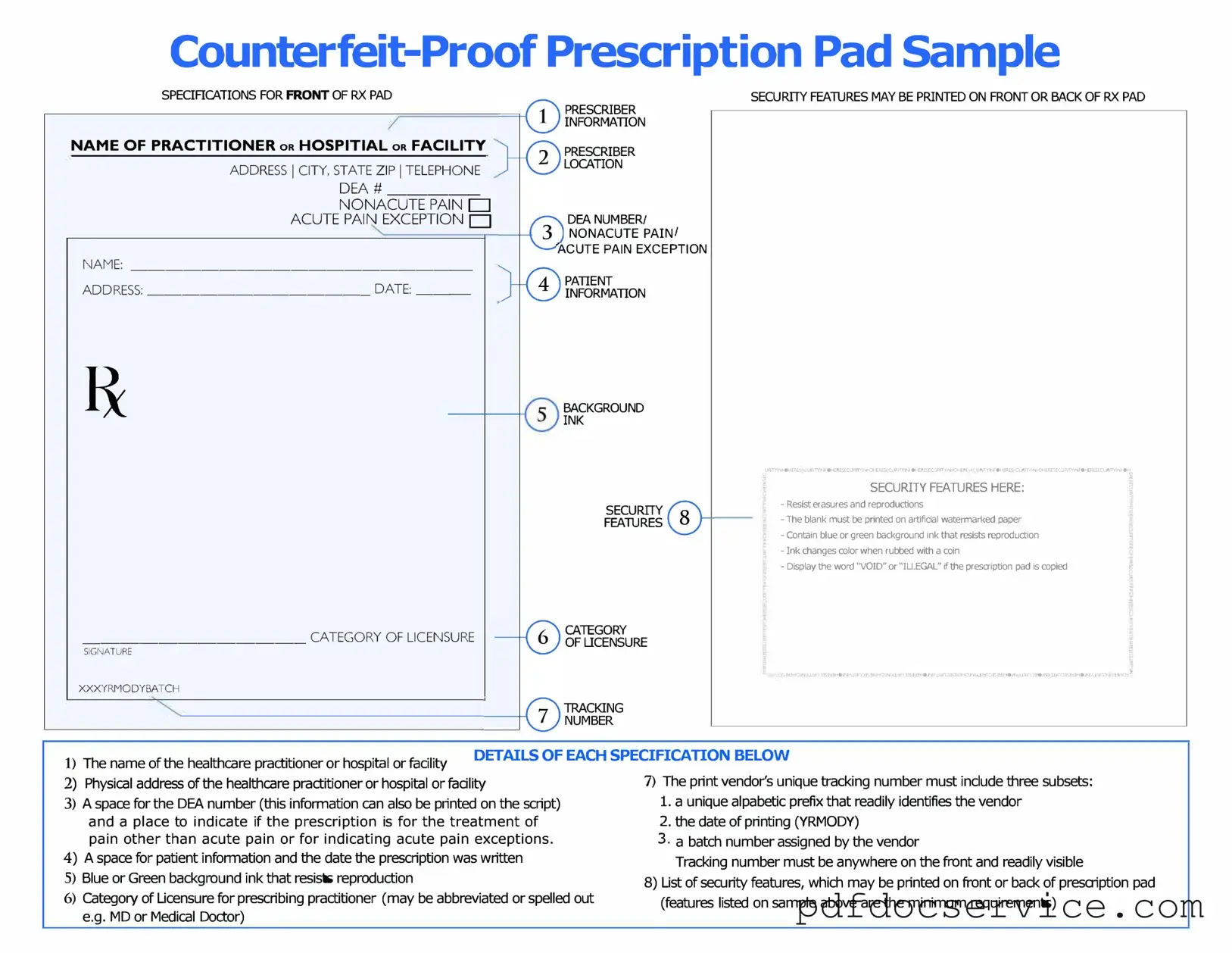The Prescription Pad form plays a crucial role in the healthcare system, serving as a vital tool for medical professionals to communicate medication needs to pharmacies. This form typically includes essential information such as the patient's name, date of birth, and contact information, ensuring that prescriptions are accurately filled. Additionally, healthcare providers must detail the medication being prescribed, including the dosage, frequency, and duration of treatment. A signature from the prescribing physician is often required, adding a layer of accountability and authenticity to the document. Furthermore, the form may contain instructions for the pharmacist and notes about potential allergies or interactions, which help safeguard patient health. Overall, the Prescription Pad form is not just a simple document; it is a comprehensive guide that facilitates the safe and effective delivery of medications to patients.
